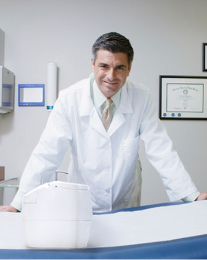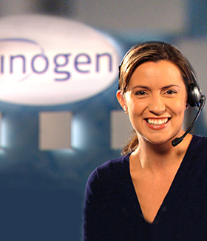Supplemental oxygen therapy helps people with COPD, COVID-19, emphysema, sleep apnea and other breathing problems get enough oxygen to function and stay well. A home oxygen concentrator is prescribed for patients who need constant oxygen while they are at home and/or asleep. [1]
A home oxygen concentrator (HOC) is a device that produces a high concentration of oxygen from ambient air for medical use within a home setting. In-home oxygen systems can make managing oxygen therapy easier for the patient and any health care providers or caretakers. This is because using an oxygen concentrator for home use, rather than compressed or liquid in-home oxygen tanks, eliminates the need for tank refills or replacements, as well as the need to keep track of oxygen amounts within the tanks. In addition, the best home oxygen concentrator is quiet and efficient while providing continuous oxygen. [2]
Home oxygen units come in a variety of different sizes and styles, but Inogen offers a home oxygen concentrator that is lightweight, quiet and energy-efficient: the Inogen At Home. Read on to learn more about our oxygen concentrator for home use, the Inogen At Home.
How a Home Oxygen Concentrator Works
Unlike in-home oxygen tanks, a home oxygen concentrator does not require expensive tanks or containers with a finite oxygen supply. Home oxygen concentrators also do not require oxygen refills or tank replacement. A home oxygen concentrator is a type of oxygen delivery device that draws in air from your surroundings, removes nitrogen and other gasses and delivers concentrated oxygen to the user (through a mask or nasal cannula). Home oxygen concentrators deliver oxygen continuously (at a steady rate) and need to be plugged into an electrical outlet to operate. [2] HOCs can weigh as much as 50 pounds, which could make them difficult to carry from room to room. In addition, the concentrator plugs into the main electricity supply at home, using 300 W (or below) per hour (about the same as four light bulbs), likely impacting the users’ electricity bills.[2] These factors may be off-putting for some people considering oxygen generators for home use. But not all home oxygen units are created equal.
The Inogen At Home oxygen concentrator is compact and lightweight. Weighing just 18 pounds and measuring only 16.5- inches tall, 7-inches deep and 13 inches wide, the Inogen At Home is easy to bring with you to whatever room of the house. Additionally, the Inogen At Home runs at a very low power consumption level, helping you save on energy costs. It is also quiet and has 5 available flow settings to help you meet your home oxygen needs. Oxygen flow rates and delivery settings can be adjusted on the unit using an easy- to-use electronic interface.
How to Use a Home Oxygen Concentrator
Plug your home oxygen concentrator into an electrical source. It needs to stay plugged in at all times to work properly. An alarm will sound if it is not plugged in or if there is an abrupt power failure. Next, attach your nasal cannula or facemask and set the rate, which is prescribed to you by your doctor. You will notice the oxygen is prescribed in number of liters per minute. The flow rate, or number of liters per minute, is your prescription. Do not self-adjust your oxygen flow rate without consulting your doctor. You can use a nasal cannula connected with a hose of up to 50 feet around your home. Be careful when you are walking so you do not trip on it.[3] The lightweight Inogen At Home oxygen concentrator is easy to bring with you to whatever room of the house you are in, so you are not tethered to a heavy tank in one room of your home.
Always follow the directions provided to ensure your oxygen therapy at home is most effective. You should also follow manufacturer’s instructions for use, although the Inogen At Home is easy to use, featuring an LCD display with power and flow setting indicators.
Getting Used to In-Home Oxygen Systems
A long cannula provides the flexibility to move throughout the house while attached to your oxygen dispenser, but it may take time to get used to stepping over the connecting tube. After the home oxygen concentrator is installed, you should practice walking around the room to get used to the feel of the cannula as it drags behind you. Step over the cannula several times to become aware of how it falls while moving in different ways. Start with one room and then move to larger spaces to accommodate moving around while using your oxygen concentrator for home use.
An oxygen concentrator for home use can be moved from room to room depending on the model, so a lighter weight model like the Inogen At Home, is easy to bring with you to whatever room of the house you are in, so you are not tethered to a heavy tank in one room of your home. Still, ensure you give yourself time to get used to being hooked up to the HOC itself, as well as the sensation of the cannula and stepping over the tube. With a little practice, you can avoid problems such as tripping or pulling uncomfortably on the nasal cannula.
If your doctor has prescribed in-home oxygen therapy, talk to your doctor about which home oxygen units will meet your needs. Contact us to find out how Inogen At Home can help you get the oxygen therapy at home you need.
Frequently Asked Questions: Oxygen Concentrators for Home Use
What is the difference between a home oxygen concentrator and a portable oxygen concentrator?
An oxygen concentrator, both home and portable, draws in air from your surroundings, removes nitrogen and other gasses and delivers purified oxygen to the user. Home oxygen concentrators deliver oxygen continuously (at a steady rate) and need to be plugged into an electrical outlet to operate. A portable oxygen concentrator (POC) is much smaller and easier to take on the go. POCs are powered by being plugged into an outlet or using rechargeable batteries. POCs can deliver oxygen continuously (at a steady rate), but most POCs deliver oxygen through a pulse dose (in bursts). The burst of oxygen is delivered each time you inhale.[2]
Do you need a prescription for a home oxygen concentrator?
Yes. All supplemental oxygen delivery systems require a prescription stating the amount of oxygen you need (number setting or liter flow), when to use your oxygen (during sleep, rest, activity, or at altitude), what type of oxygen equipment fits your lifestyle and oxygen requirements, and a “certificate of medical necessity” required by Medicare and most insurers. Whether you use in-home oxygen tanks, a portable oxygen concentrator or an oxygen concentrator for home use, you will need a prescription to ensure you receive the right oxygen dosage for your oxygen dispenser.[1]
How Long Will I Need to be on Oxygen Therapy?
Home oxygen therapy can be prescribed for any amount of time for short-term therapeutic benefit to long-term chronic lung disease management. Ask your doctor and never alter your oxygen therapy at home or attempt to stop using your home oxygen concentrator without seeing your doctor first. [1]
Do Home Oxygen Units Present a Fire Risk?
Supplemental oxygen is generally very safe. Oxygen is a safe gas and is non-flammable; however, it supports combustion. Materials burn more readily in an oxygen-enriched environment. That means, if it comes in contact with a flame, it could start a very large fire. The biggest safety measure is to keep your oxygen away from an open flame or heat source, avoid petroleum-based products (as they are highly flammable) and have a fire extinguisher handy.[3] By following simple safety guidelines, POC usage is safe.
References
- my.clevelandclinic.org-health-treatments-23194-oxygen-therapy
- Hardavella G, Karampinis I, Frille A, et al. Oxygen devices and delivery systems. Breathe 2019; 15: e108–e116.
- https://www.lung.org/lung-health-diseases/lung-procedures-and-tests/oxygen-therapy/how-can-oxygen-help-me










